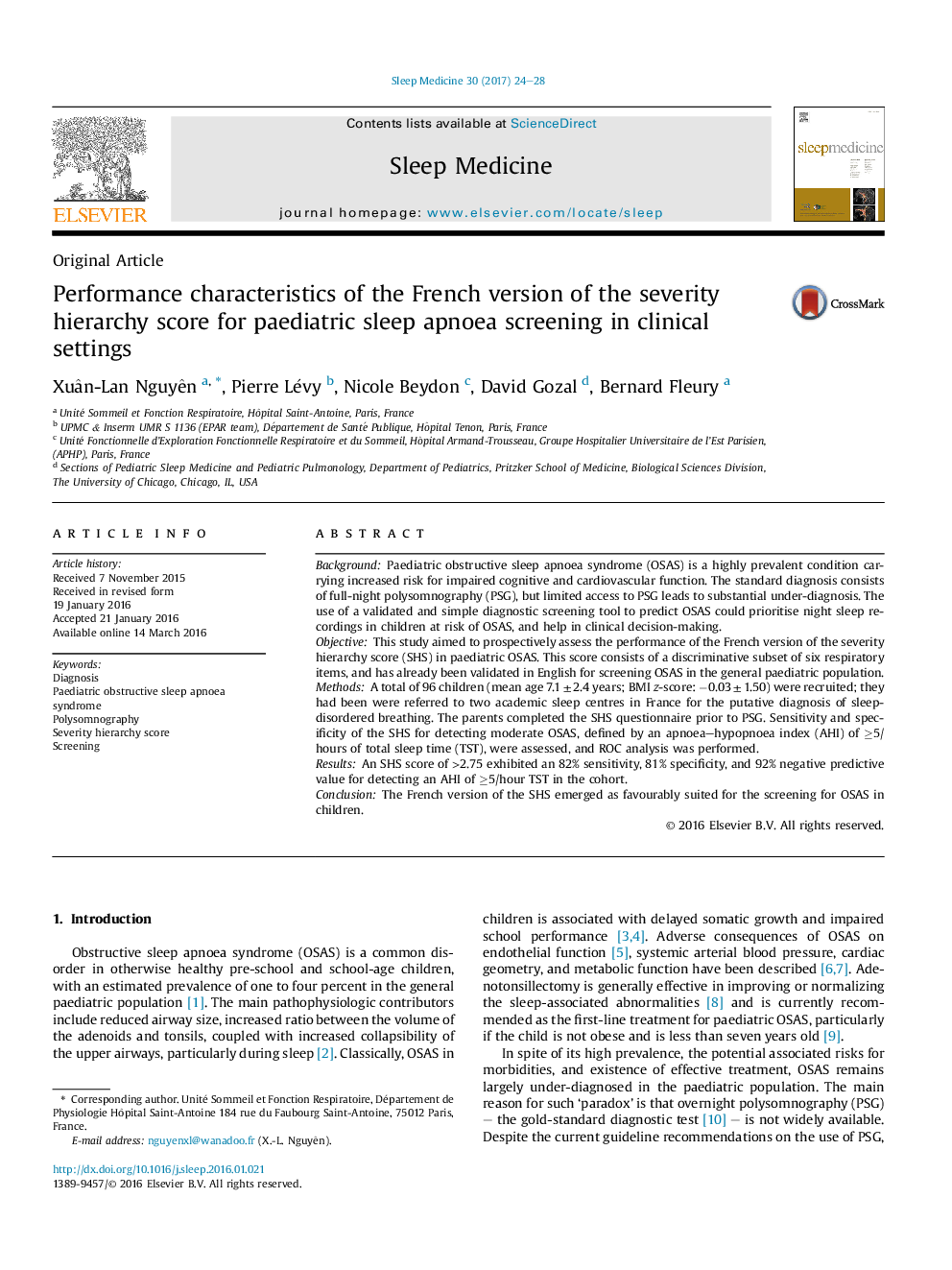| Article ID | Journal | Published Year | Pages | File Type |
|---|---|---|---|---|
| 5643804 | Sleep Medicine | 2017 | 5 Pages |
â¢Sleep studies (NPSG) are required for diagnosis of obstructive sleep apnoea syndrome in children.â¢NPSG are not always widely available.â¢Development of questionnaires that improve NPSG selection is needed.â¢A six-item questionnaire revealed favourable performance in French children.
BackgroundPaediatric obstructive sleep apnoea syndrome (OSAS) is a highly prevalent condition carrying increased risk for impaired cognitive and cardiovascular function. The standard diagnosis consists of full-night polysomnography (PSG), but limited access to PSG leads to substantial under-diagnosis. The use of a validated and simple diagnostic screening tool to predict OSAS could prioritise night sleep recordings in children at risk of OSAS, and help in clinical decision-making.ObjectiveThis study aimed to prospectively assess the performance of the French version of the severity hierarchy score (SHS) in paediatric OSAS. This score consists of a discriminative subset of six respiratory items, and has already been validated in English for screening OSAS in the general paediatric population.MethodsA total of 96 children (mean age 7.1â±â2.4 years; BMI z-score: â0.03â±â1.50) were recruited; they had been were referred to two academic sleep centres in France for the putative diagnosis of sleep-disordered breathing. The parents completed the SHS questionnaire prior to PSG. Sensitivity and specificity of the SHS for detecting moderate OSAS, defined by an apnoea-hypopnoea index (AHI) of â¥5/hours of total sleep time (TST), were assessed, and ROC analysis was performed.ResultsAn SHS score of >2.75 exhibited an 82% sensitivity, 81% specificity, and 92% negative predictive value for detecting an AHI of â¥5/hour TST in the cohort.ConclusionThe French version of the SHS emerged as favourably suited for the screening for OSAS in children.
